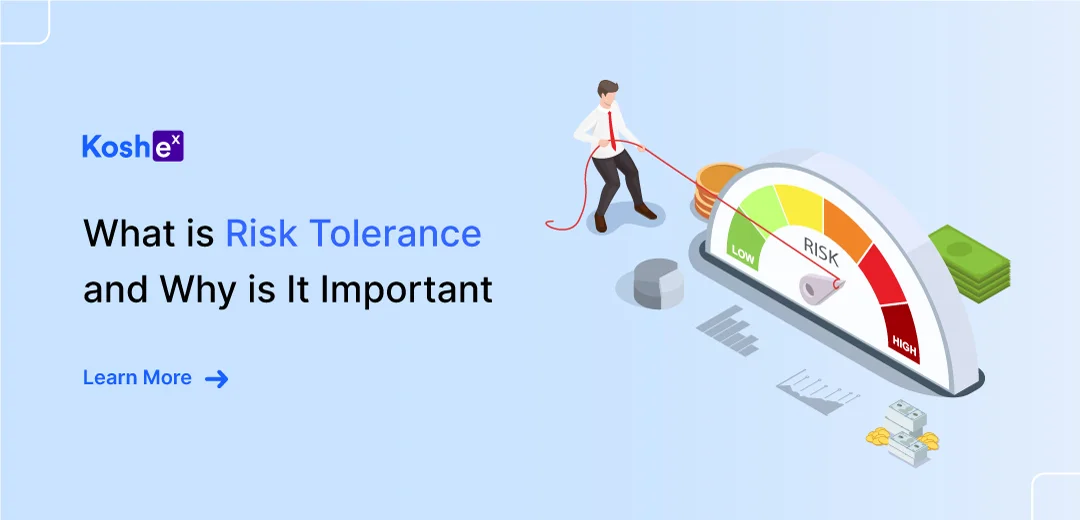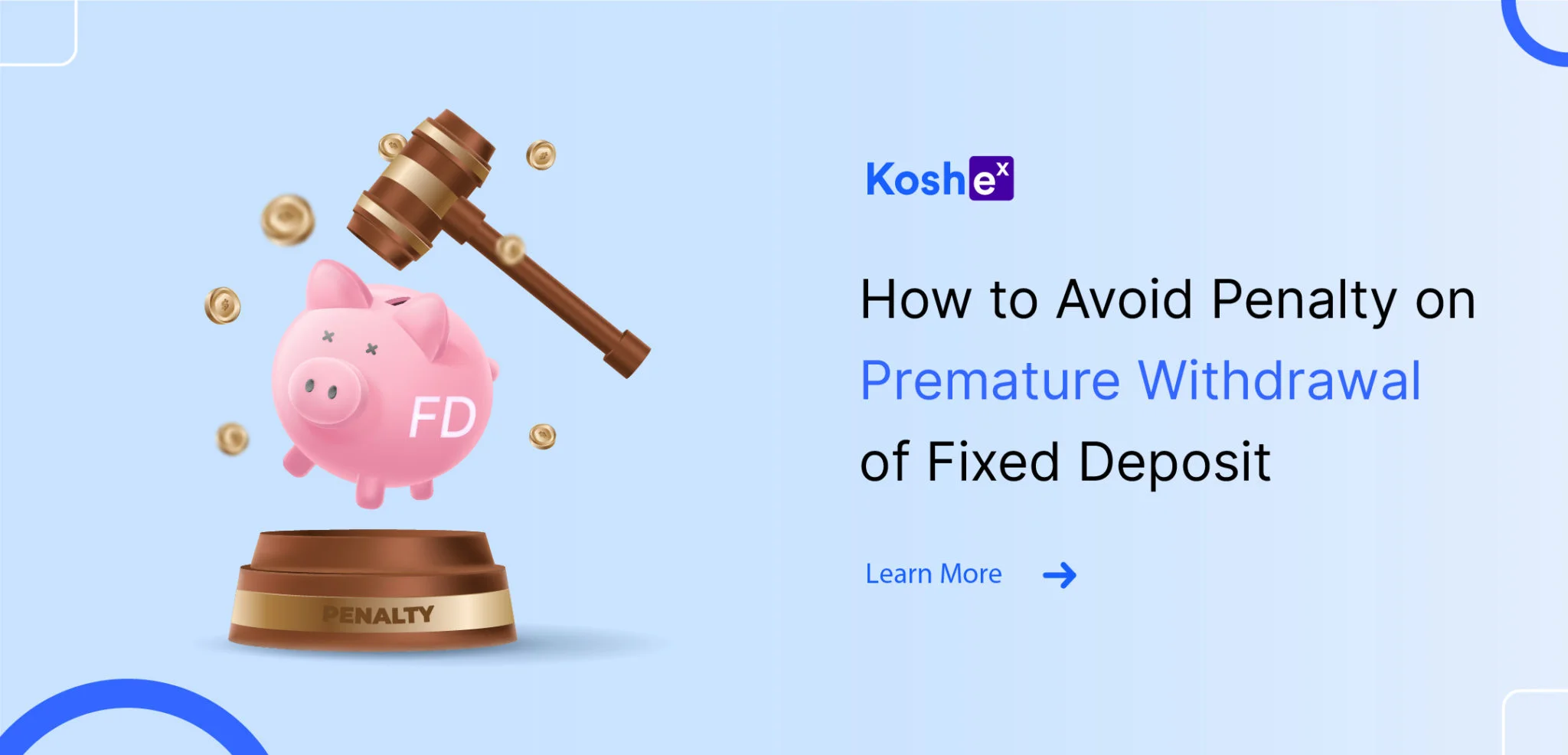Risk Tolerance: Overview
Risk tolerance, in simple terms, means the level of loss that an investor can bear or tolerate while making an investment decision.
Risk tolerance levels may vary from person to person and are generally directly related to the risk appetite of an investor. It also depends on the amount of wealth and investments you are holding and the liquidity of those assets. Get started on Koshex to save responsibly and track investments smartly.
Understanding your risk tolerance is important because it can help you make investment decisions that are aligned with your personal goals and financial situation. It can also help you avoid making emotional decisions during market fluctuations and can help you stay on track with your long-term investment strategy.
Factors that Determine Risk Tolerance Levels
Risk tolerance levels for young working people would be generally higher than those nearing retirement. This is because, the younger crowd has more time on hand and a steady income in the form of a salary This allows them to take more exposure to high to moderate-risk investments like direct equity, mutual funds, etc.
At the same time, risk tolerance levels may also vary depending on the kind of investment instruments you are planning to invest in. For example, debt or fixed-income instruments have a lower risk tolerance level as they are presumably less volatile. Whereas equity stocks or mutual fund investments may have high-risk tolerance levels as these are linked to stock market volatility.
The different factors affecting your risk tolerance levels as an investor are as follows:
Time Factor
Time is a crucial factor that can significantly affect your risk tolerance. In general, the longer the time horizon, the more risk-tolerant an individual can afford to be.
Individuals with longer time horizons tend to be more willing to take risks because they have more time to ride out any short-term volatility in the markets. For example, if you are looking to invest for 15 years, you will take more risk compared to someone who requires money by the end of 5 years.
Financial Goals
Financial goals differ from person to person. The purpose of your investment is not only to make the highest return on investment but also, to meet specific goals.
Age Factor
Young individuals tend to be aggressive investors with high-risk tolerance levels while older individuals are generally risk averse. Young working people tend to have confidence and more time to earn, save, and invest money. This enables them to spend responsibly and track expenses and investments smartly.
Investment Quantum
Investment size or quantum is critical in an investor’s life. The larger the investment size means, the more tolerant the investor will be toward risk.
Risk Appetite
Risk appetite is the comfort level with which an investor is prepared to invest in a particular asset class. Normally, investors who invest in direct equities, Bitcoin, etc. have a higher risk appetite, meaning they can stomach a higher amount of losses.
Different Levels of Risk Tolerance
Aggressive Risk Tolerance
Aggressive risk tolerance levels are generally associated with high-risk investors who mostly invest in small-cap equity stocks or options and contracts to make quick gains. While this can promise high returns, it can also fall heavily or become zero during volatile market conditions. These investments are generally ideal for investors who want to maximize their returns despite the associated high risk that these instruments carry.
Moderate Risk Tolerance
When it comes to financial planning, moderate risk tolerance may be reflected in investment strategies that balance risk and reward. This might involve a mix of low-risk, low-return investments such as bonds or debt mutual funds and higher-risk, higher-return investments such as stocks or small-cap mutual funds. People with a moderate risk tolerance are willing to take on some level of risk to achieve higher returns but are also interested in preserving capital and minimizing losses. The investment horizon is estimated to be about 5 to 10 years.
Conservative Risk Tolerance
As an investor under conservative risk tolerance, you may prioritize the preservation of capital and the minimization of losses over the pursuit of high returns. You may be willing to accept lower returns in exchange for greater safety and stability. Investors in this category mostly park their money in fixed deposits, cash equivalents such as savings accounts or certificates of deposit, etc.
It is important to note that while conservative investments may offer greater safety and stability, they may earn lower returns that may not keep pace with inflation. Therefore, if you have a conservative risk tolerance, you may need to adjust your investment strategies or financial goals accordingly to meet your needs.
Summing Up
At the crux of financial planning, assessing and estimating risk tolerance is critical to carve out an efficient asset allocation strategy that will ensure decent returns with capital protection. Different factors may affect or determine the risk levels that you (the investor) may assume or tolerate while being invested or before taking a particular investment decision.
Risk tolerance directly relates to the return earning capacity. The higher the level of risk tolerance more is the probability of earning higher returns from investments. With a lower risk tolerance level, the probability of earning high returns is lesser.
It is important to note that risk tolerance is a personal preference, and what might be considered “moderate” for one person may not be the same for another. Factors such as age, financial goals, and overall financial situation can all impact an individual’s risk tolerance.
To know more about this, please sign up with the Koshex platform and find out your risk tolerance levels before kickstarting your investment journey.
Frequently Asked Questions (FAQs)
Q. What would you do if your portfolio is constantly falling?
The first thing would be to undertake a risk assessment. Decide how much more risk tolerance you have before deciding to continue with the current portfolio. If you are concerned about a further downfall, consider a portfolio rebalancing or restructuring. In some cases, you can consider liquidating a certain portion to protect your capital.
Q. How to measure risk tolerance?
Measurement of risk tolerance would generally depend on your risk appetite, time horizon, existing assets, income levels, ability to sustain volatility, and the kind of investment products you want to invest in. Based on different weightages for these factors, a risk assessment score can be derived. This will determine the risk tolerance level bucket.









Leave a Comment